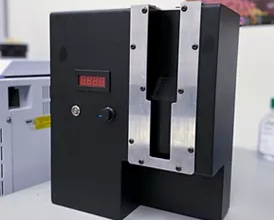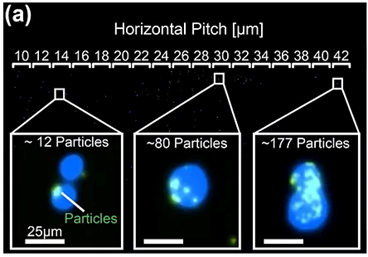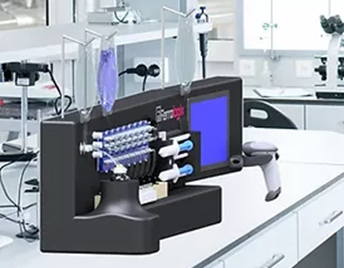
Ferrologix, a biotech startup that is developing micromagnetic tools to address a variety of cell and tissue processing applications, is breaking new ground with its work on isolating rare cells from blood samples. Recently the company has installed several of its cell separation systems at medical research institutes in the Boston area focusing on developing precision medicine diagnostics and therapeutics, according to Coleman Murray, chief operating officer.
Located in Carlsbad, California, the company was founded in 2015 based on a core technology that Murray invented called digital magnetic sorting or ratcheting cytometry. The technology uses chips composed of ferromagnetic microstructure arrays which can be used to concentrate and manipulate magnetic fields at microscopic scales. By subjecting the chips to a rotating or ratcheting, magnetic field, cells which have been magnetically tagged can be precisely transported as they jump from element to element. The manipulation process can be used to precisely transport and filter millions of cells simultaneously.
“While magnetic cell sorting is the gold standard for target cell enrichment, traditional magnetic sorting methods struggle to deliver sufficient purities and yields when targeting rare cell populations,” the company explained in a poster paper at this year’s conference of the Society for Laboratory Automation & Screening, held February in Boston.
Shown above is its benchtop cell separator. It achieves superior rare cell isolation compared to existing magnetic separators as well as parallelized sorting of two surface targets simultaneously, says Ferrologix. Micromagnetic substrates pixelate static and dynamic magnetic fields to the microscale utilizing arrays of ferromagnetic microstructures. Using standard magnetic bead reagents, cells or other biological elements can be trapped and piloted on these arrays by cycling the magnetic field at defined frequencies. The digital magnetic sorting takes a normally binary process and augments it with flow cytometry like capabilities.

Using chips with gradient pitch micromagnetic arrays, magnetically tagged cells can be sorted based on the quantity of cell bound magnetic content. On a Ferrologix chip, cells can be sorted into magnetic distributions based on magnetic intensity, similar to how fluorescence-activated cell sorting uses light intensity. The technique can achieve high purity enrichment of rare cell types by “gating” out weakly magnetic non-target cells. Weakly magnetic non-target cells will remain trapped at lower microelement pitches compared to highly magnetic target cells.

Ferrologix is scaling its platform to achieve high throughput target cell purification for cell therapy manufacturing applications. Just like the benchtop system, the production scale cell sorter can achieve high purity enrichment of rare cell types on a single target or parallel isolation of two targets.

Utilizing ordered magnetic microstructures, it is also developing a suite of tools for single cell analysis and gene modification. Magnetized cells self-assemble into single cell arrays which can then be assayed or modified using specially developed magnetic reagents. For more info, see www.ferrologix.com.



